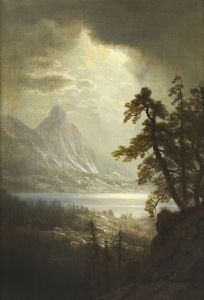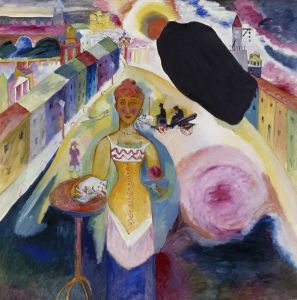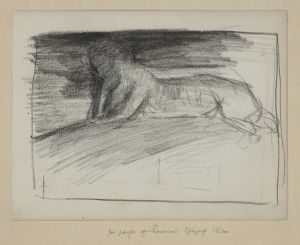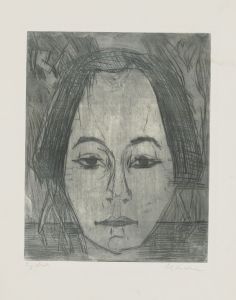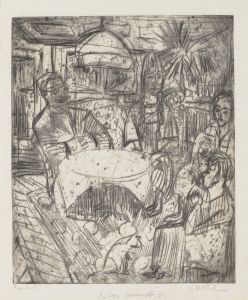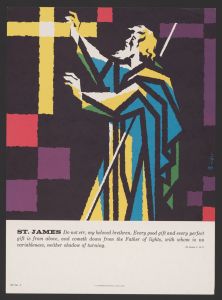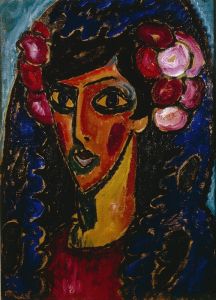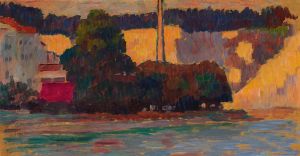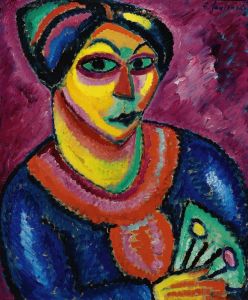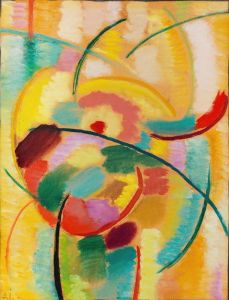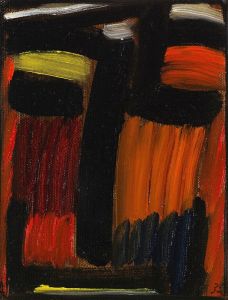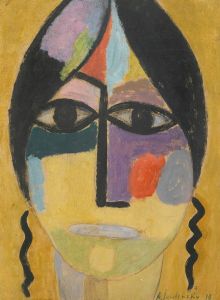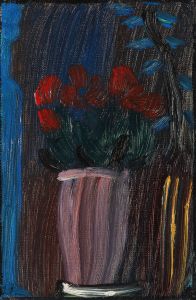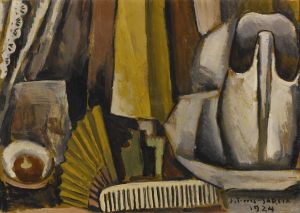
Murnau
A hand-painted replica of Alexej von Jawlensky’s masterpiece Murnau, meticulously crafted by professional artists to capture the true essence of the original. Each piece is created with museum-quality canvas and rare mineral pigments, carefully painted by experienced artists with delicate brushstrokes and rich, layered colors to perfectly recreate the texture of the original artwork. Unlike machine-printed reproductions, this hand-painted version brings the painting to life, infused with the artist’s emotions and skill in every stroke. Whether for personal collection or home decoration, it instantly elevates the artistic atmosphere of any space.
Alexej von Jawlensky was a Russian expressionist painter known for his vibrant use of color and bold compositions. One of his notable works is "Murnau," a painting that reflects his unique style and artistic vision. Jawlensky was part of the avant-garde movement in the early 20th century, and his work was influenced by his interactions with other artists of the time, including Wassily Kandinsky and Gabriele Münter.
"Murnau" is a testament to Jawlensky's exploration of color and form. The painting is named after the town of Murnau am Staffelsee in Bavaria, Germany, where Jawlensky spent time with other artists. This region was a significant source of inspiration for him and his contemporaries, who were drawn to its picturesque landscapes and vibrant colors. The town of Murnau became a hub for artistic experimentation, and it played a crucial role in the development of the expressionist movement.
In "Murnau," Jawlensky employs a vivid palette, using bold and contrasting colors to convey emotion and atmosphere. His brushwork is expressive, and the composition is characterized by simplified forms and a focus on the interplay of color and light. This approach reflects the influence of Fauvism and the broader expressionist movement, which sought to capture the emotional essence of a subject rather than its realistic depiction.
Jawlensky's work during this period was also influenced by his interest in spirituality and the inner experience. He believed that art should transcend the material world and express deeper spiritual truths. This philosophy is evident in "Murnau," where the use of color and form serves to evoke a sense of transcendence and emotional resonance.
The painting is part of Jawlensky's broader body of work, which includes portraits, landscapes, and abstract compositions. Throughout his career, he continued to refine his style, moving towards greater abstraction and a focus on the spiritual dimensions of art. His work has been recognized for its contribution to the development of modern art, and he is considered a key figure in the expressionist movement.
Jawlensky's time in Murnau was a period of significant artistic growth and experimentation. The collaborative environment with other artists in the region fostered a spirit of innovation and creativity. This period was marked by a departure from traditional artistic conventions and an embrace of new techniques and ideas.
"Murnau" exemplifies Jawlensky's commitment to exploring the expressive potential of color and form. It stands as a representation of his artistic philosophy and his contributions to the expressionist movement. Today, Jawlensky's work is celebrated for its bold use of color and its ability to convey profound emotional and spiritual experiences. His paintings, including "Murnau," continue to be studied and appreciated for their impact on the trajectory of modern art.





